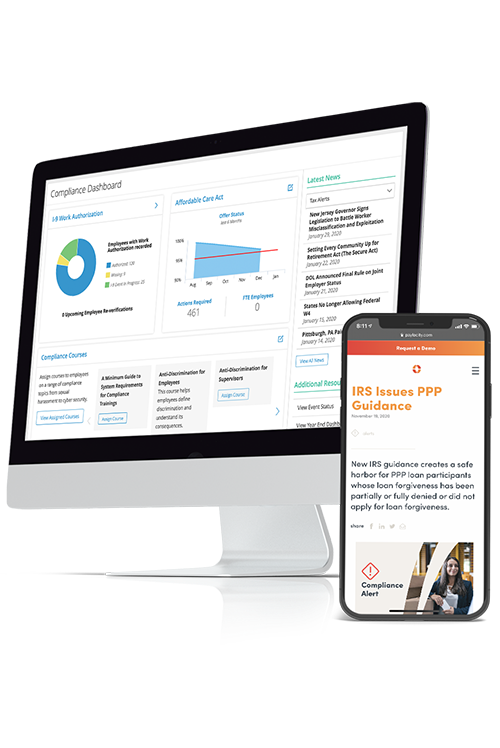resources
Pay Transparency: What HR Needs to Know Today for Tomorrow
June 06, 2023
Disclosing salary information is a tricky proposition, but one that’s becoming increasingly prevalent — and expected.
Blog Post

Conversations about pay transparency are becoming more… transparent.
With the federal Salary Transparency Act introduced in Congress in March 2023, along with similar legislation recently enacted in New York City and several states, U.S. companies are increasingly being pressured to disclose current employee pay and ranges of posted positions.
What does this growing trend mean for HR professionals?
Let’s dive into the legislation, research, and strategies that will help HR prepare now for the future of pay transparency.
What Is Pay Transparency?
Pay transparency is exactly what it sounds like: Being open and honest about employee salary information.
If only it were that simple!
Pay transparency has implications for both employees and employers, and HR sits right in the middle. The challenge is bringing everyone together in a way that moves your organization forward.
There are many levels of pay transparency. Some are mandated by law. Some are the result of the vast amounts of salary information available online, which gives both candidates and current employees unprecedented visibility into your pay practices.
Importantly, there is also the promise your organization makes to your people to offer fair and equitable pay. How you honor that commitment will impact your employer brand — and your ability to attract and retain top talent.
But even before it became a buzzword, there has always been some transparency in the workplace. Because employees are human. They talk to each other about their employers and their wages. The differences now are how employees are protected and what they expect from an employer.
Equal, Fair, or Equitable? Pay Transparency Terms
There are three related terms that overlap in the dialogue about pay transparency, which is also known as wage transparency and salary transparency.
While often used interchangeably, these concepts have some subtle nuances.
- Equal Pay — In federal legislation, equal pay typically applies to an employer’s obligation to pay women and men equally if their jobs are “substantially equal.” It does not mean equal pay for all.
- Fair Pay — Also referred to as a fair wage or fair compensation, this term often encompasses equal pay, as in “equal pay for equal work.” But it means more broadly that an employer provides compensation commensurate with the value of the work performed.
- Pay Equity — Pay equity includes issues relating to the fairness of compensation paid by employers to individuals or groups of employees. It covers three key strategies:
- Ensuring employees feel they are being rewarded fairly based on performance, skills, and other job requirements.
- Providing the wages and benefits that keep your company competitive with other employers in the same labor market.
- Evaluating your organization’s legal obligations and pay practices and identifying corrective action.
What About Pay Compression?
Pay compression occurs when employees are compensated the same or similarly regardless of their experience, skills, and qualifications. As you determine your pay transparency policies, you may discover:
- Starting salaries have been inadvertently inflated to compete for new talent.
- Salaries have not been adjusted consistently over time for tenured employees.
Learn more about pay compression, its causes and consequences, and what you can do to fix it in our article: The Truth About Pay Compression.
Is Pay Transparency Important?
Every organization, no matter the number of employees or where they are located, is held accountable for implementing fair pay practices.
In addition to meeting legal requirements, how you handle pay transparency touches every phase of the employee lifecycle — and every core HR function, from what you post in a job listing to how you use feedback from an exit interview.
First, let’s get the compliance part out of the way.
Are There Federal Pay Transparency Laws?
The U.S. Department of Labor administers more than 180 employment laws, many of which address equal pay and fair wages. But currently there is little codified guidance on pay transparency at the federal level.
That could change in the near future.
Salary Transparency Act
On March 14, 2023, H.R. 1599 — also known as the Salary Transparency Act — was introduced in Congress. It would amend the Fair Labor Standards Act (FLSA) to require an employer of any size to disclose the wage range for an employment opportunity to employees and applicants.
Under this act, employers are also prohibited from refusing to interview, hire, promote, or employ an employee or applicant for employment, or in any other manner retaliate against an employee or applicant, for exercising their rights described in the legislation.
Pay Equity for All Act of 2023
The Pay Equity for All Act of 2023 (H.R. 1600) was introduced at the same time. It prohibits employers from relying on the wage history of prospective employees when considering them for employment or determining their wages, unless the candidate volunteers the information to negotiate a salary offer.
As with most legislation, the risks of non-compliance with these federal laws could be steep, from paying a civil penalty to paying statutory damages to every employee or applicant who was affected.
Which States Have Pay Transparency Laws?
Today, there are eight states that have enacted pay transparency laws: Maryland, Colorado, Connecticut, Nevada, Rhode Island, Washington, California, and New York.
And that number stands to increase. At least 15 states are currently considering salary transparency legislation.
Of course, each state law is different from the next, making compliance for organizations with a multi-state workforce that much more complicated. Bear in mind, state-specified laws apply to remote employees who work in those states.
Some laws require an employer to provide salary ranges upon request, while others mandate when wage information must be disclosed. For example, Rhode Island stipulates job applicants are entitled to know the wage range for a position upon request and prior to discussing compensation. During employment, wage range information must be provided anytime an employee requests it.
It's not just states that are taking pay transparency into their own hands. In November 2022, New York City passed an amendment to the NYC Human Rights Law that requires employers to include a good faith pay range in job advertisements.
The regulatory landscape will likely continue to change over the next several years. See the Center for American Progress’s article, Quick Facts About State Salary Range Transparency Laws, for a helpful overview of passed and pending legislation.
Pay Transparency: Weighing the Pros and Cons
Whether or not your organization is required by law to disclose salary information, you have some decisions to make about how and how much you share with employees.
But the research on pay transparency reveals a dichotomy. On one hand, pay transparency can help boost recruiting and retention efforts. On the other, if not carefully managed, pay transparency can devastate company culture, productivity, and the bottom line.
The Benefits of Pay Transparency
The purpose of increasing salary transparency is to close wage gaps and eliminate employment discrimination. This is certainly a positive outcome that benefits everyone. And there are others.
Improved Recruiting Efforts
Not surprisingly, among U.S. workers, 82% are more likely to consider applying for a job when the pay range is included in the listing. For HR professionals, pay transparency can help attract top talent, with 66% of organizations reporting transparency during the recruiting process has increased the quality of applicants.
Promotes Better Awareness of Compensation Strategy
Pay transparency also allows and encourages organizations to examine the distribution of rewards across roles and levels. Companies can further evaluate whether wages are set using consistent criteria.
Potential for Improved Productivity
The effects of pay transparency on productivity can vary depending on what the transparency shows.
Employees who discover they are overcompensated often increase their effort to justify their higher wage, while those who feel undercompensated don’t change and may even “quietly quit.” However, a field-based empirical investigation found evidence that pay transparency has a positive impact on several productivity measures.
Cost-savings for Employers
In another empirical analysis, the National Bureau of Economic Research found that average wages actually fall among private sector employees when mandates are put in place that increase pay transparency. This could result in cost savings for the company, although workers might not see that as a benefit.
Pay transparency can help make an organization more competitive in the labor market and more equitable in its compensation policies and practices. It can improve productivity and reduce costs.
So, pay transparency is a win, right?
Yes, but it also comes with challenges that HR professionals should be prepared to address.
The Challenges of Pay Transparency and How to Overcome Them
You might expect employees to be largely in favor of sweeping pay transparency reform — and they are.
Yet a survey of 1,200 workers found 63% are concerned about knowing how much their co-workers make, fearing it could be “problematic.”
Pay transparency does raise a few challenges. Here’s what they are and what you can do about them.
Shifts in Salary Bargaining Dynamics
Just as pay transparency can give employees bargaining power when applying for a job or a wage increase, it can also have the opposite effect. If everyone knows what everyone makes, employers have an easy out: “I can’t pay you more because I would have to give everyone a raise.”
The solution: Make sure employees understand the full breadth of their compensation with a total rewards statement. A total rewards statement calculates the cumulative value of all compensation including actual salary, benefits, and perks. These documents can help employees understand the full value of their compensation and can lead to more productive and transparent salary conversations.
Potential for Flattened Salaries and Reduced Motivation
Ultimately, pay transparency can flatten salaries, which diminishes employee motivation. If employees don’t feel they will be rewarded for high performance, they have little reason to excel. And if workers feel they are not compensated fairly, they won’t stay.
The solution: Provide multiple avenues for employee recognition. Set up a peer recognition program, bonus rewards, and other employee engagement initiatives that ensure your workforce feels valued beyond just compensation.
A total rewards statement can be helpful here too so employees can see the full value of their compensation package.
Increased Competitor Visibility
One last drawback to sharing salary information publicly. Competitors will be able to see the wages you offer and bid higher for top talent.
The solution: To prevent employee poaching, make sure you keep a beat on market-level salary and compensation trends, and use this data to help inform your compensation decisions.
Planning for the Future of Pay Transparency
The momentum behind pay transparency doesn’t look to be slowing down.
According to a study by global advisory company WTW, 17% of organizations are already disclosing pay range info in the U.S. where they aren’t legislated to do so, and another 62% are planning or considering disclosing pay rate information in the future.
In that same study, though, 46% of companies are holding back on making pay information broadly accessible, citing possible employee reactions as a primary reason.
There are three key steps that will help you implement pay transparency best practices in your organization.
1. Develop a Communications Strategy
Change management can be a challenge for most companies. How smoothly a transition happens often boils down to effective communication. In the case of pay transparency, all current employees are affected by changes in policy.
Increased visibility into your pay practices — whether that’s on request or through a public job posting — will inevitably raise questions. Employees will understandably want to know how decisions about compensation are made, especially if they feel they are not being paid fairly.
Remember, if you don’t talk to your employees first, they will talk more among themselves to gather information.
2. Provide Training for Managers
Conversations about pay can be uncomfortable for managers. What should they say about how compensation is structured? How do they handle an employee who’s upset by the information that’s now available? What are hiring managers obligated to disclose about pay ranges during an interview?
Managers must have some understanding of employment law, but they also may need training on how to have salary talks with their direct reports.
3. Invest in a Payroll Suite with Robust Compensation Capabilities
In the WTW study mentioned above, almost one in three organizations cited administrative complexity as a reason to hold back on communicating pay information with both job seekers and current employees.
This is where you can leverage HR tech to alleviate some of that administrative burden. Be sure your HRIS software has a comprehensive set of compensation tools that allow you to easily monitor and adjust compensation, while also being mindful of budget.
Bonus points if your platform can provide insights at scale, allowing you to make strategic, data-driven decisions about your rewards strategy.
Even if you operate in a state without pay transparency requirements, investing in the right tool now will prepare you for the inevitable expansion of this type of legislation. Plus, you’ll be able to start reaping the additional benefits of salary transparency.
Be Prepared for Pay Transparency
Pay transparency legislation will continue to evolve in the foreseeable future, as will employee expectations. Don’t get left behind.
Paylocity’s modern HR and payroll solution has tools that make it easy to keep up with the changing compliance landscape, evaluate your pay structure, and help employees better understand your pay policies.
Our platform’s compensation software has user-friendly features that help HR teams:
- Automatically generate a total rewards statement so you can showcase the full value of an employee’s compensation (and stay compliant with applicable regulations).
- Easily allocate overall budget and eligibility for compensation to ensure alignment with organizational goals, and view budget summaries.
- Examine up-to-date market pay data, so you can make strategic decisions about compensation and have transparent conversations with employees.
Request an HR and payroll software demo today to learn how we can help you stay compliant with pay transparency laws and stay ahead of shifting employee expectations.



